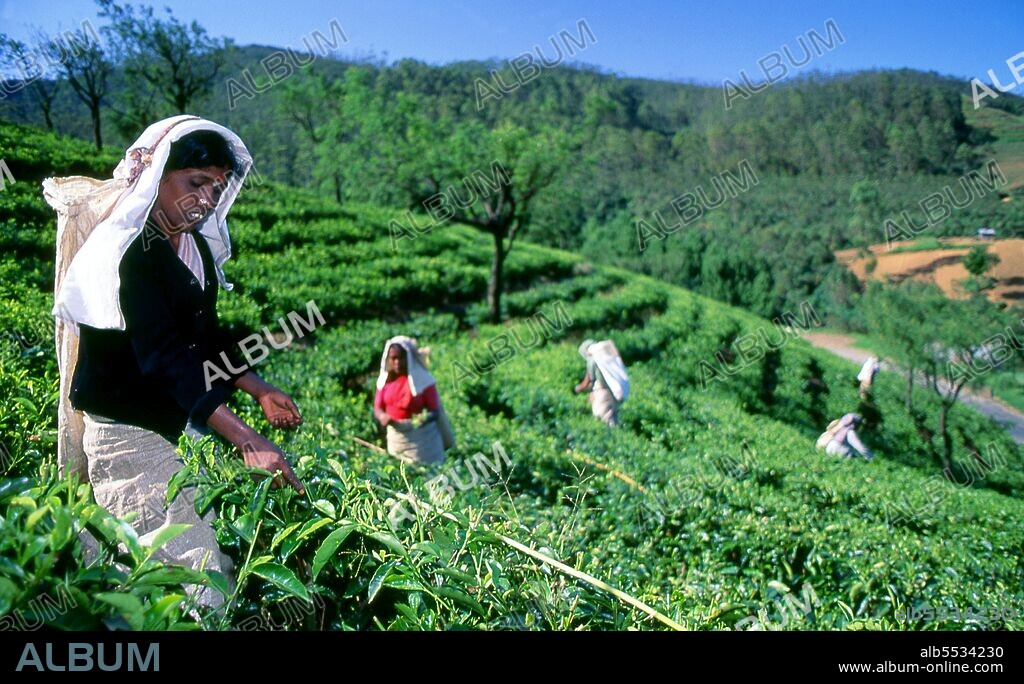alb5534230
Sri Lanka: Tea pickers near Nuwara Eliya, central Sri Lanka

|
Zu einem anderen Lightbox hinzufügen |
|
Zu einem anderen Lightbox hinzufügen |



Haben Sie bereits ein Konto? Anmelden
Sie haben kein Konto? Registrieren
Dieses Bild kaufen

Titel:
Sri Lanka: Tea pickers near Nuwara Eliya, central Sri Lanka
Untertitel:
Siehe automatische Übersetzung
Tea production in Sri Lanka, formerly Ceylon, is of high importance to the Sri Lankan economy and the world market. The country is the world's fourth largest producer of tea and the industry is one of the country's main sources of foreign exchange and a significant source of income for laborers, with tea accounting for 15% of the GDP, generating roughly $700 million annually. In 1995 Sri Lanka was the world's leading exporter of tea, (rather than producer) with 23% of the total world export, but it has since been surpassed by Kenya. The tea sector employs, directly or indirectly over 1 million people in Sri Lanka, and in 1995 directly employed 215,338 on tea plantations and estates. The humidity, cool temperatures, and rainfall in the country's central highlands provide a climate that favors the production of high quality tea. The industry was introduced to the country in 1867 by James Taylor, the British planter who arrived in 1852.
Bildnachweis:
Album / Pictures From History/Universal Images Group
Freigaben (Releases):
Model: Nein - Eigentum: Nein
Rechtefragen?
Rechtefragen?
Bildgröße:
5100 x 3143 px | 45.9 MB
Druckgröße:
43.2 x 26.6 cm | 17.0 x 10.5 in (300 dpi)
Schlüsselwörter:
ACKERBAU • AGRIKULTUR • ASIEN • ASIEN, KONTINENT • BLATT • BLATT, PFLANZE • BLATTORNAMENT • BLATTORNAMENTE • DRESCHEN • DRESCHEN, LANDWIRTSCH. • ERNTE • FLORA • FRAU • FRAUEN • GESCHICHTE • GETRAENK • GETRAENKE • GETRÄNK • GETRÄNKE • KONTINENT, ASIEN • LANDWIRTSCHAFT • LANDWIRTSCHAFT: DRESCHEN • LANDWIRTSCHAFT: ERNTE • MINDERHEITEN • PFLANZE • PFLANZE: BLATT • PFLANZEN • PLANTAGE • SRI LANKA • TRINKEN • WEIBCHEN • WOMAN • ZEITGESCHICHTE
 Pinterest
Pinterest Twitter
Twitter Facebook
Facebook Link kopieren
Link kopieren Email
Email
